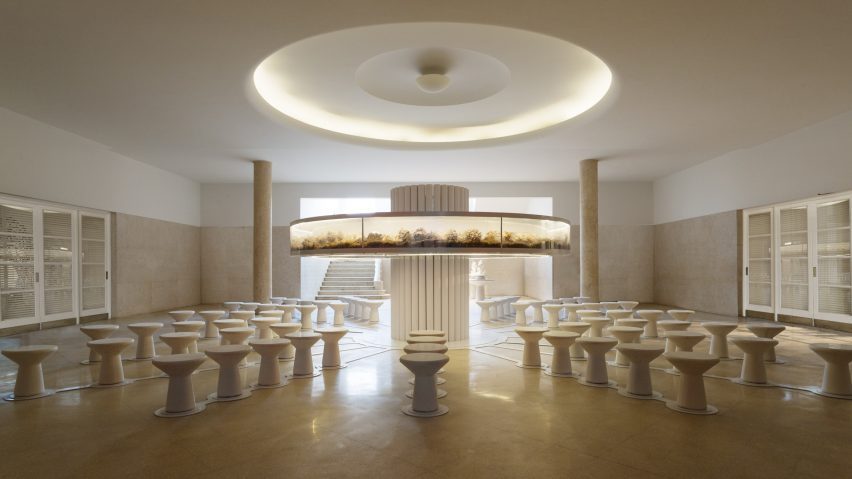
Fungi Kingdom bio-art installation offers contemplative space in Buenos Aires
A hundred mushroom-shaped stools encircle an incubator for growing different fungi species as part of this bio-art installation in Buenos Aires.
The Fungi Kingdom – Urban Farm installation was created by architects Julio Oropel and Jose Luis Zacarias Otiñano inside the historic Tiro Federal Argentino, built in 1937.
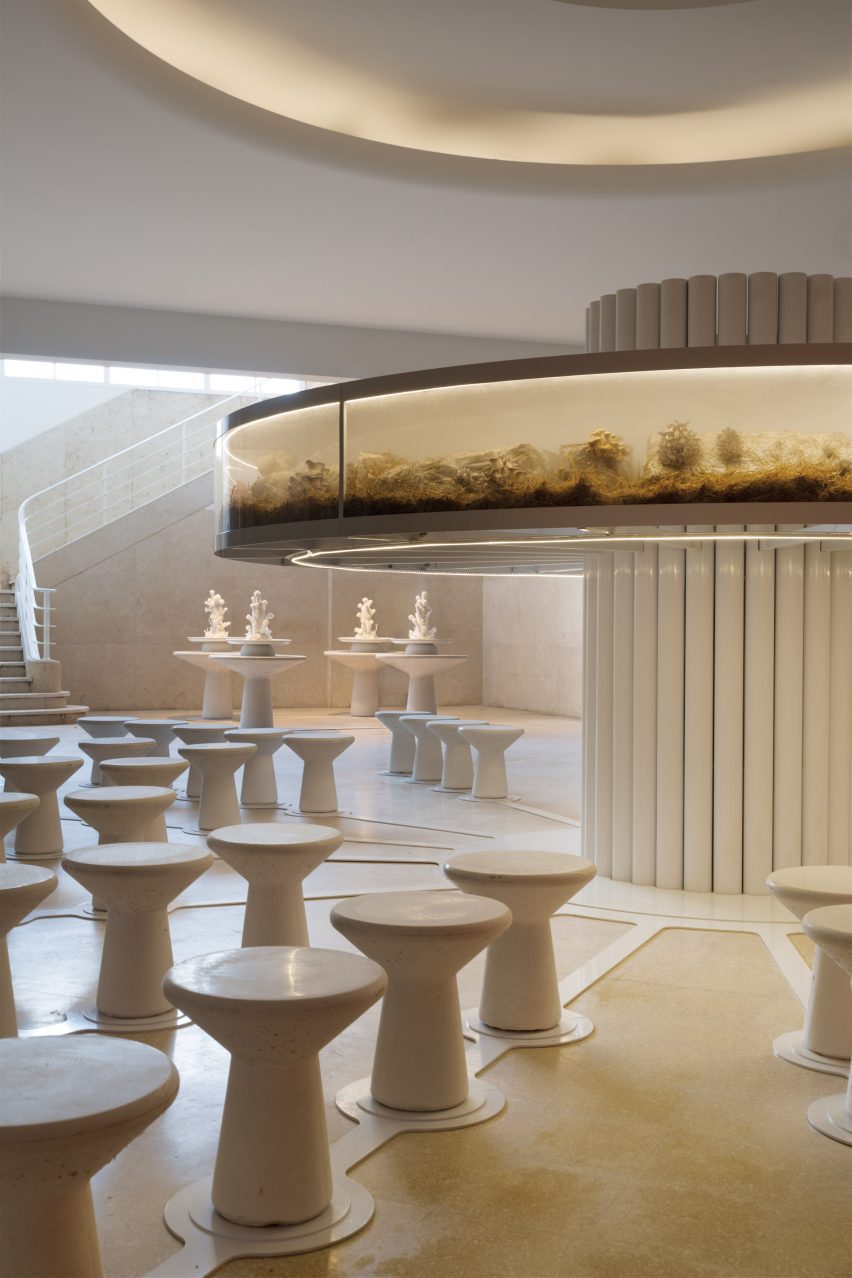
Responding to the rationalist stone architecture of the building's Central Hall, particularly its circular ceiling feature, the designers laid out a fungi-themed display comprising multiple connected elements.
In the centre, directly below the ceiling feature, a thick fluted column supports an elevated disk in which a variety of mushrooms grow.
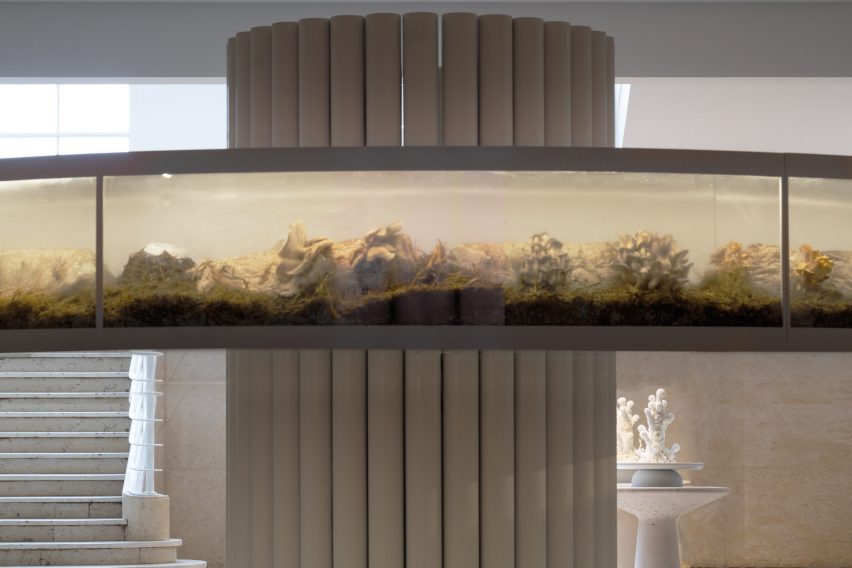
"Black Pearl species, pink and golden Gargoyles, Pioppino and Ganoderma Lucidum grow inside the circular aerial structure in an environment governed by light and moisture," said the architects.
The sides of the disk are transparent so that visitors can peer inside, and the lighting within the structure emits a soft glow.
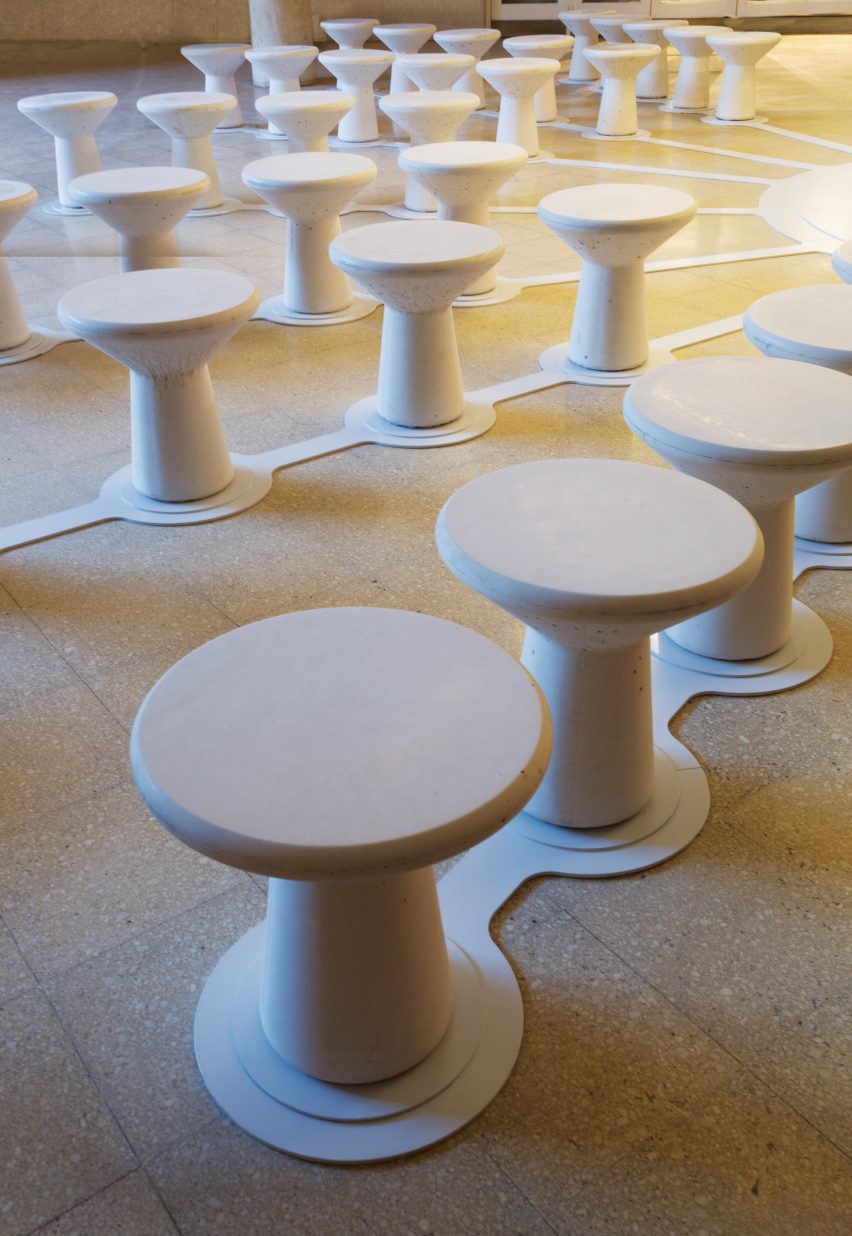
Branching from the central tower across the granite floor are white metal tendrils that represent mushroom mycelium – the connective tissue through which the organisms feed, communicate and reproduce.
From each of these lines sprout identical white concrete Yembé stools that resemble minimalist toadstools, forming five concentric rings around the room.
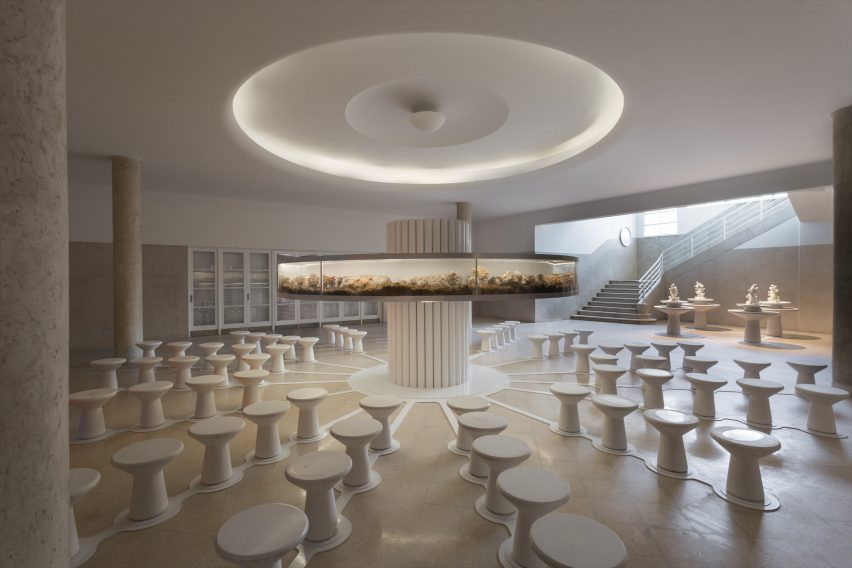
Together, the series of stools create "a space for contemplation" to consider how human beings are connected to the objects and the spaces that surround us, according to the architects.
"[The project] is a conceptual statement dealing with ecological and evolutionary thinking about life, living beings and the fungi kingdom," they said. "It aims to explore a world where human activity, art, culture and action are mutually dependent and thereby benefiting all ecosystems health."
Beside a nearby staircase, more metal plates form a square upon which four larger, white concrete podiums are placed at each corner.
These tables display organic sculptures by Florencia Echevarria, with delicate forms that mimic fungal growths.
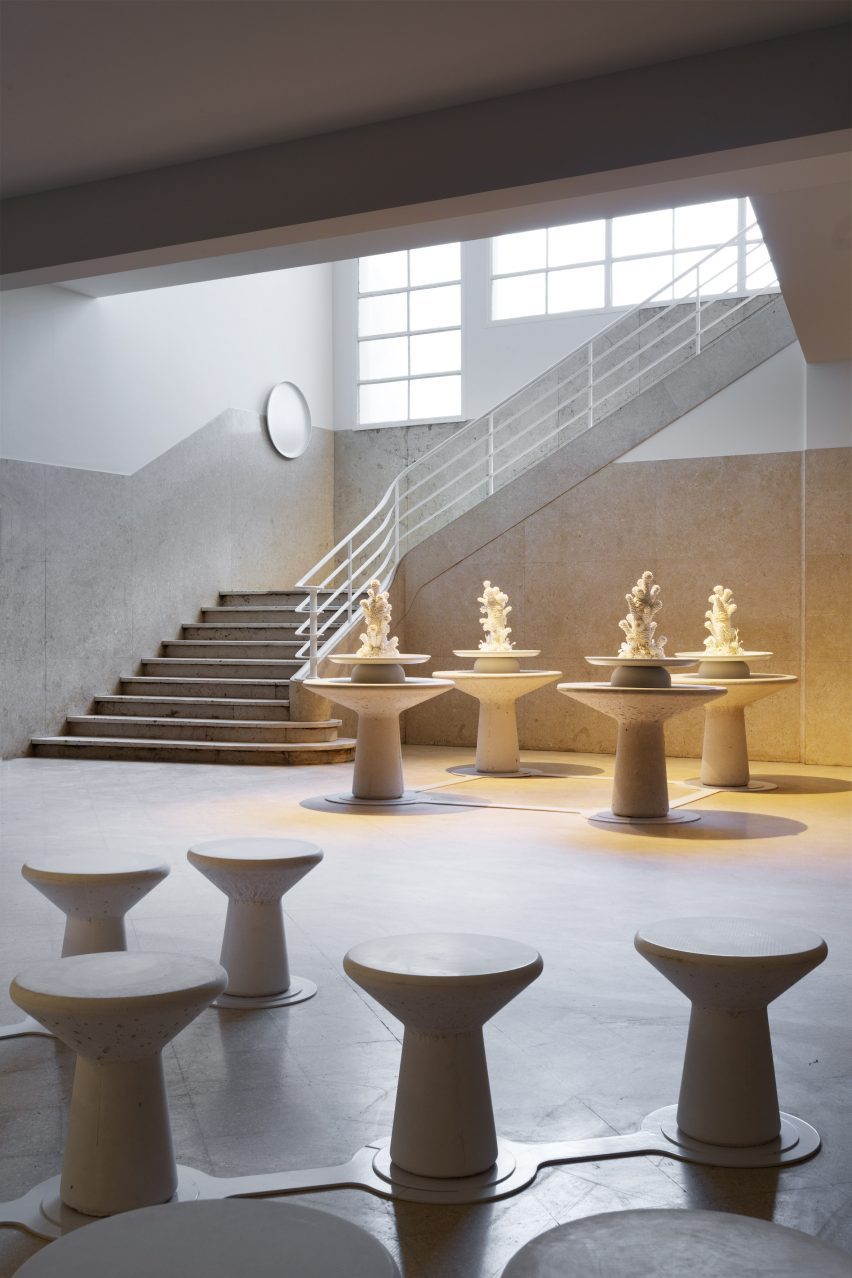
Once the exhibition ends, the central metal installation will be moved to a children's playground.
Many designers have used fungi in some form in their work – from ideas for packaging and fashion, to furniture and even architecture.
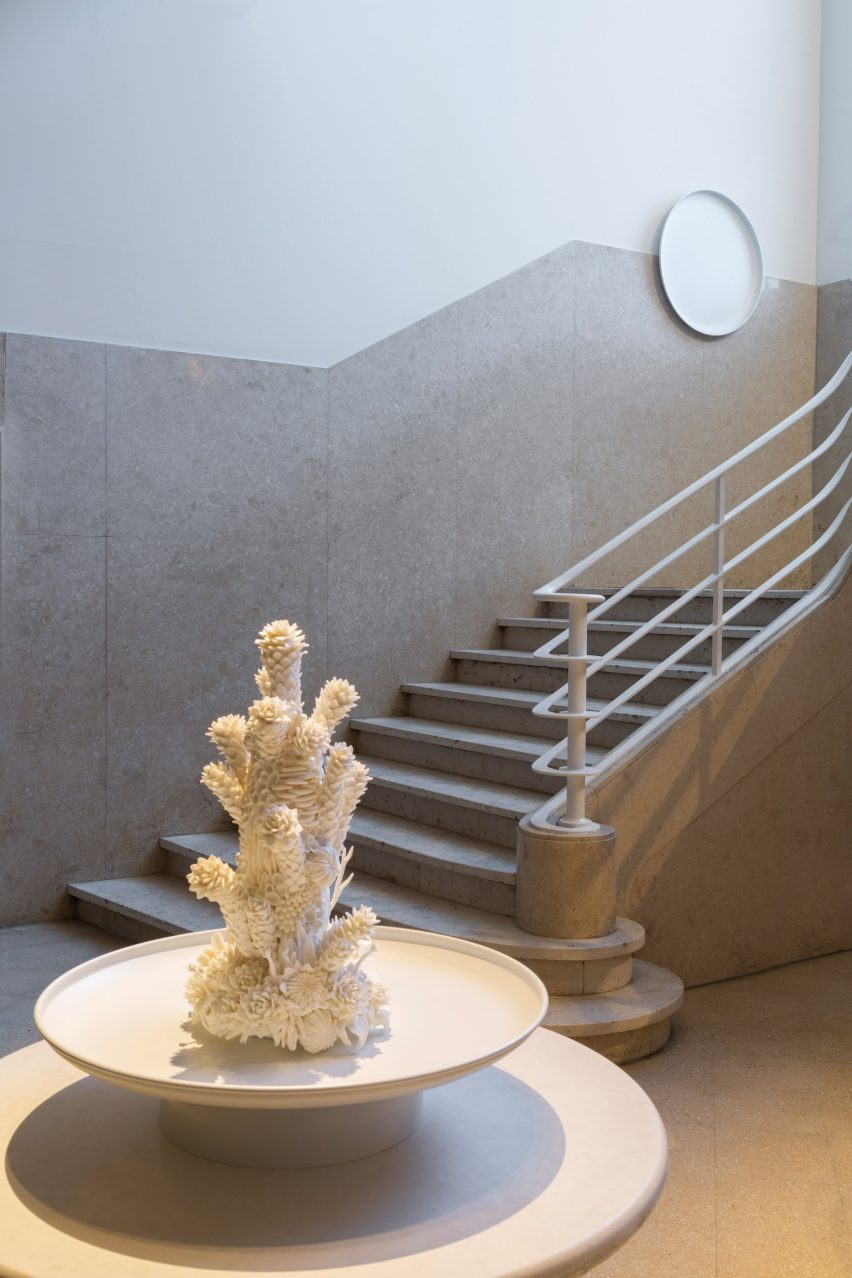
The benefits of mycelium as a strong, biodegradable material with multiple potential applications continue to be explored, and Oropel and Zacarias Otiñano see this project as an extension of that work.
"We, designers, argue and redefine the human environment ecology," said the duo. "The role performed by bio-art is paramount in this transition to post-Anthropocene era, wherein man is no longer the centre but dwells in symbiosis with nature, culture and technology."
The photography is by Adela Aldama.
Fungi Kingdom – Urban Farm was created for the 39th edition of the Casa FOA architecture and design exhibition, which ran from 15 September to 16 October 2023. See Dezeen Events Guide for an up-to-date list of architecture and design events taking place around the world.